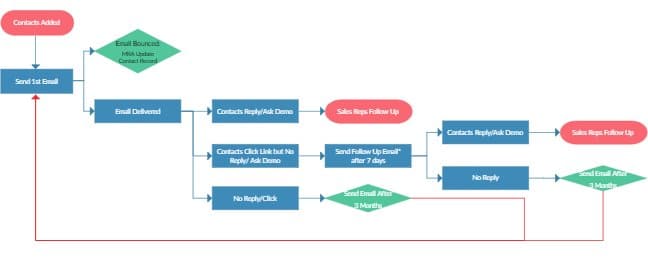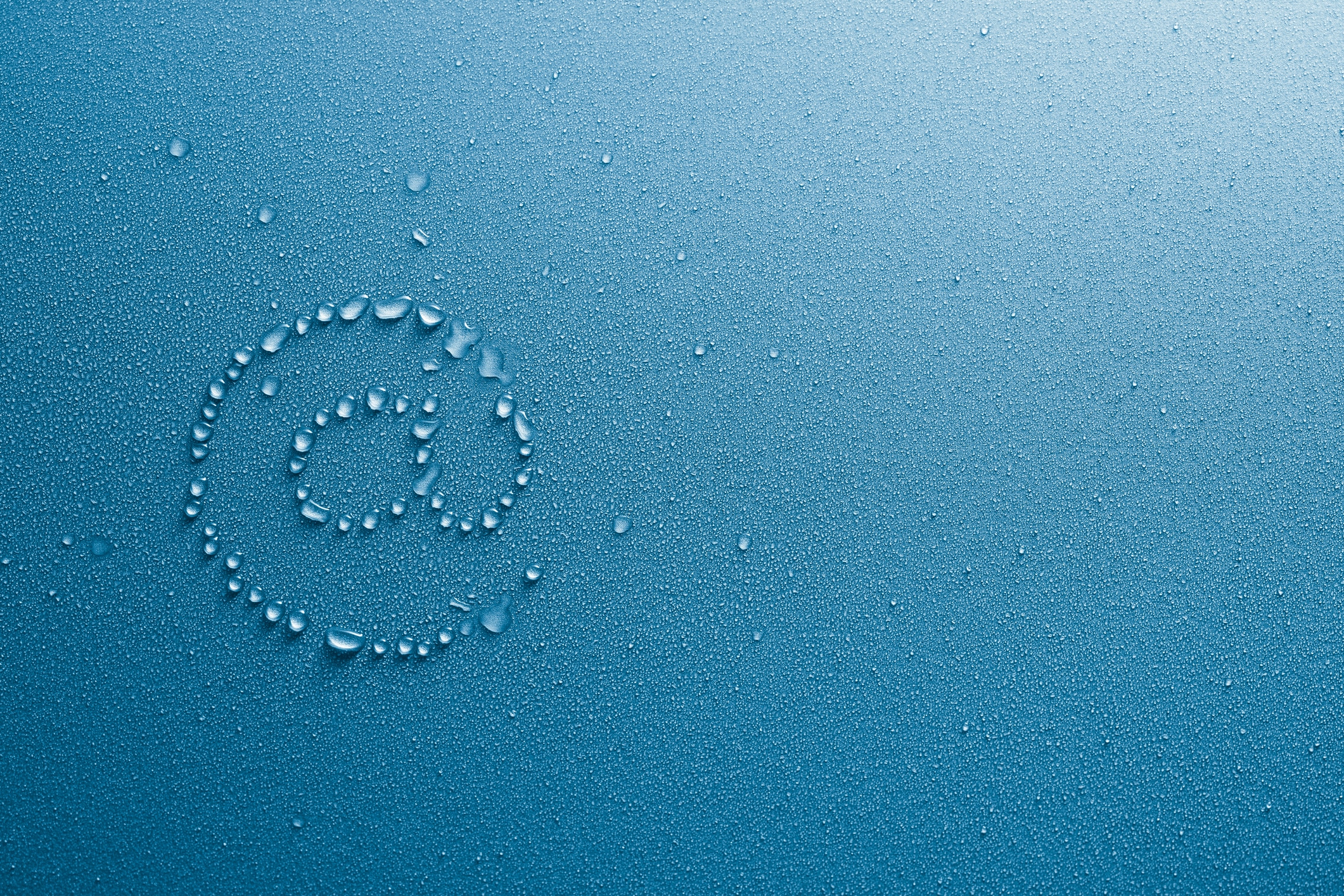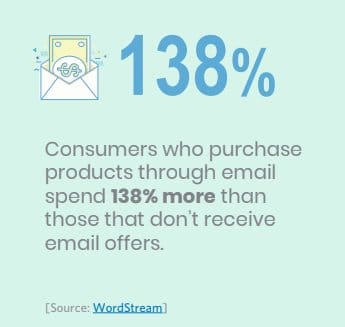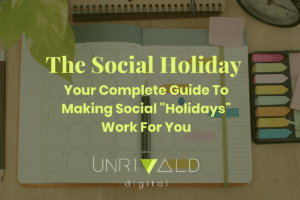When your business is just starting out, it can be difficult to find enough time to manage sales and marketing on top of delivering your products and services. One of the smartest investments a small business can make is automated email marketing software. Automated email marketing is a low-cost, low-risk, high-reward way to keep prospects warm and move them toward conversions – win-win!
What is a drip campaign?
A drip marketing campaign is a series of automated emails that are triggered by a user taking a specific action. For instance, when a customer makes a purchase from your online store for the first time, you may want to send them a series of messages that are geared toward a first-time buyer – messages that a regular customer may not be interested in. The key here is that the campaign is kicked off by that action: a first purchase.
Setting up a drip campaign for clients (or prospective customers) in advance can be an enormous time-saver for a small business. Once you identify the specific action to trigger the campaign, you or your marketing team can design subsequent emails to reach out to the prospect with messaging to warm them up and lead them to action. The beauty of this system is that you only have to build those campaigns once, and they do the heavy lifting to deliver regular touchpoints with your clients and encourage them to take specific actions in response.
How is an automated email campaign different from a newsletter or regular sales email?
- Original content: A newsletter contains original content that is, in some way, timely and relevant to them. A newsletter is likely sent to a wider audience of current and prospective customers and is thus more likely to be general.
- Automation: Because newsletters rely on original content, they must be created brand-new for every edition. A drip campaign is created once and automatically delivered many times.
- Targeting: Most small businesses deliver a single newsletter that isn’t targeted to any specific audience. A drip campaign, on the other hand, can be set for multiple different triggers relevant to your business, and thus specific to the action that triggered it.
What kind of triggers should I use for my drip campaign?
The triggers you use for your automated campaigns will be specific to your business, but here are some examples of different events and behaviours that can trigger an email campaign:
Acquiring
- Shopper abandoned cart
- Prospect downloaded lead magnet content
Retaining
- Customer made first purchase
- Client engaged a new service
Re-engagement
- Member last logged in X days ago
- Lost-lead check-in after X days
Upselling
- Time or service milestones (anniversaries, launches)
- Customer purchased one product triggering cross-promotion
As these examples illustrate, the triggers can be client-driven triggers (shopping or downloading), time-based triggers (days since last login, time since a lead got away), or sales-driven triggers (upselling a new service, or congratulating on a milestone achieved).
The key is to determine what actions are relevant to your business and are valuable opportunities to create a touchpoint with current, future or former clients.
What do I need to set up an automated email campaign?
Content-wise, you need a reason to send a message to someone, and have a clear action that they need to take in response.
Technically, you’re going to need an automated email program (disclaimer: we’re a Constant Contact partner and love its flexibility for managing automated email campaigns).
A stand-alone email program is great if your business deals primarily in digital sales. It can connect to your ecommerce store and respond to customer behaviour that happens there. It can also track downloads of lead magnets and initiate campaigns based on that demonstration of interest.
To maximize the value of your drip campaigns, however, you’ll also need a CRM (Customer Relationship Management) system. A CRM system will allow you to track the journey a prospective customer takes from the time they appear on your radar, through conversion, and beyond. Some CRM systems include integrated automated email software. This means that every new lead entered can drop them into a campaign.
What should I include in a drip campaign?
Every email you send as part of a campaign should be relevant, valuable and respectful of the reader’s time. It should also be enjoyable to read!
Your message should be clear and concise, using the appropriate tone to convey your message, engaging and easy to read (keep your design simple and on-brand).
Make it clear why the reader has received the message, and what you want from them. If they abandoned a cart, your message can be short and to the point. You may want to incentivize the action, as this example shows:
We noticed you didn’t complete your purchase. Click to finish shopping in the next 30 minutes and save an extra 5% using code: SHOPNOW.
You could also leave out the incentive and focus on the urgency of shopping before a specific time, when an existing discount or price cut ends.
How many email messages should I send?
A drip campaign will rarely be a single message. Why? A single message can be overlooked in an overcrowded inbox, or forgotten in the course of a busy day. Instead, plan to create a sequence of messages. A drip sequence can contain as few as three or four messages, or as many as a dozen.
(An exception would be automated emails that are essentially auto responses, like an abandoned cart nudge. If more than one message feels like overkill, it probably is!)
Use those multiple email messages to tell a story, a narrative that catches their attention and makes it clear why they should act as you’re directing them. Use the sequence to add value to their day by sharing valuable information or tips.
Give them a reason to open each message: use dynamic and attention-grabbing subject lines.
What does a drip campaign look like?
Essentially, your sequence will be a series of emails, each ending with a decision point for the recipient to act on or ignore.
The sequence you create should represent a clear path: Email -> Decision point (act or ignore?). If they act, X happens. If not, Y happens.
Give careful thought and attention to the email campaign as you set it up. Consider what triggers it, what the call to action is in each message, – and what happens if the reader takes that action! If you build a sequence to entice a client to buy more from you, and they DO respond to the message, they SHOULDN’T continue to receive the rest of the sequence!

Need help?
Automated drip campaigns are a powerful way to simplify customer management and sales. We work with clients to identify, create and implement email marketing campaigns that engage, retain and convert their target customers. Let us help you! Contact us today for a free, no-obligation consultation to see how we can put email to work for you.











